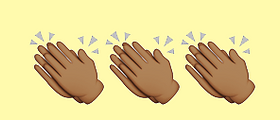Beyoncé’s Lemonade by Aria Dean
Aria Dean
Against a hot take. There is a way in which maybe the condition of blackness resists the hot take /// is itself a series of hot takes, massaging the same content for new perspectives continuously. The Lemonade question isn’t one of innovation, but of articulation and i feel this way when i think of much of our production. Of course there is the new, but underneath it there is almost always the old. Time crumbles under our gaze.
I went to see the David Hammons show in NYC a few weeks ago - pre-Prince’s death, pre-Lemonade. I went with friends, and as we entered the room with the big chandelier basketball hoop, one friend - also Black - whispered to me: “black magic.” This was, in fact, the exact feeling of Hammons’ exhibition. There was dark energy vibrating between objects - I guess tension, like I could trip a wire. My face felt hot the whole time. This all sounds irrational and flowery, but I have to stress that I’m rarely moved by artworks - and still I wouldn’t even call this feeling “moving” or movement of any sort. It felt more like being fixed for a moment.
The Black Magic that runs through the Hammons exhibition is similar to if not the very same as the magic that runs through Lemonade. In Beyonce’s case, there is an impulse to deem it #blackgirlmagic, but I can’t fully vibe with that. The magic is something darker, something that surpasses and/or undermines that language. I guess what I’m thinking about is this thing that happens when black people make things - yes, I’ll speak in generalized terms - which is that time and space bend and fold, stretching and twisting out of shape. And I guess what it also feels like is something brewing and spinning, in both cases - Hammons and Lemonade - my cheeks hot and breath short from the speed of it.
We bounce bruised, confused, and triumphant from plantation to city; from the top of a building to underwater, underground. We float in and out of a time that none of us watching actually know except through images, texts and the occasional chill that runs bone-deep.
I keep thinking about two of the works in Hammons’ show as I think about Lemonade. (and I do wonder if I’m just trying to force two things I like very much into the same conceptual space but…). There is one work that is this upright ring of glass bottles, all clear and greenish-blue. And I’d never seen this one before but it made me think of this blue bottle collection my mom always kept above the sink in the house i grew up in, and how I learned that my grandma had an even bigger collection back in Queens, and how I became obsessed with this and later learned about bottle trees and blue in the American South. All of these objects spinning in some orbit together, on a timeline seemingly separate from and unaware of one another.
And the other work is this huge gilded mirror with metal plates tacked clumsily over the glass such that I can pretty much only see my feet. I can’t look at myself directly - maybe if I lie on the floor? Looking at it my immediate question is: what does a white viewer feel looking at this? I’m feeling the denial of an opportunity to look ourselves in the face - sometimes mediated, sometimes fully blocked - at times ushered toward abstraction, forced into subtextual communication with ourselves/one another.
And then here we have Beyoncé who for so long has perhaps abstractly ‘represented’ her own black womanhood. You know, presenting it as this sort of beautiful open work, allowing audiences to graft their experience onto it. Like back in the day, her self-affirmation was wholly translatable. But Lemonade is a brutally representative work.
Hammons and Beyoncé converge and she scales the mirror and rips off the metal plates.
